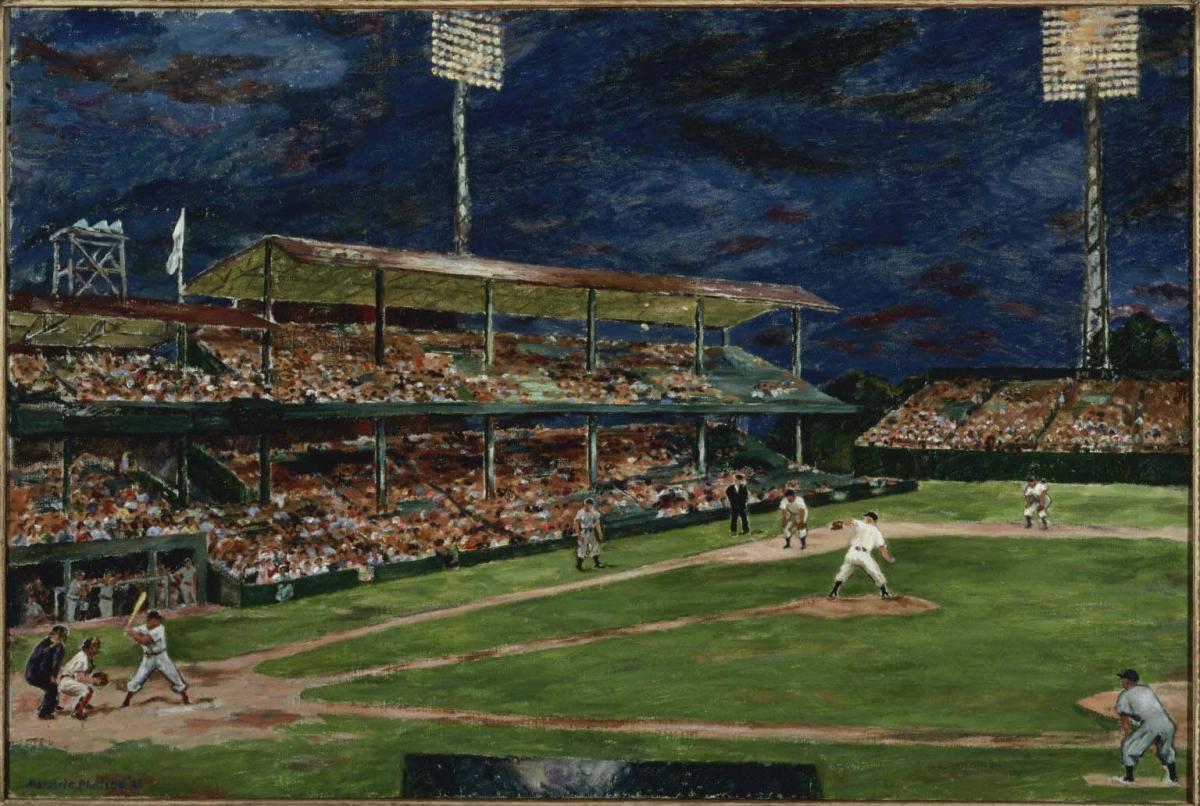Night Baseball
Marjorie Phillips ( 1951 )

Marjorie Phillips married a baseball fan. Duncan Phillips was an avid supporter of the home team, the Washington Senators. The family had box seats just behind the team’s dugout on the first base line at Griffith Stadium in Washington, D.C. Though Phillips had little interest in baseball before her marriage, she accompanied her husband and son Laughlin to hundreds of games in the 1930s and 40s. She often brought her sketching materials, making use of her time by observing everything around her. She wrote: “I would always make some pencil drawings of the grandstands, the dugout with players waiting, the plan of the baseball diamond, etc. I noted the color in the seated crowds at Griffith Stadium where the games were held at that time….”
Night Baseball is the artist’s most successful work inspired by those outings. She portrayed a night game between the Senators and the New York Yankees in the summer of 1951, and depicts a climactic moment, just before the pitcher releases the ball to set the field in motion. Everyone—the players, the umpires, and the coaches—is poised, ready to react to the pitch. Most prominent is the batter, baseball legend Joe DiMaggio. Phillips includes him as the one identifiable player on the field, recognized by his famous wide-open stance. It was an important time for DiMaggio: his last season. One can imagine the crowd looking from pitcher to batter, silent, waiting, anticipating the crack of the bat, the ball sailing, DiMaggio running the bases, with an opposing player scrambling to tag him out. But rather than show such action, Phillips captures the suspense of the moment, the tension between the pause in the action and what is to come.
Phillips took full advantage of the special qualities of baseball played at night under lights. The blue-violet, cloud-strewn sky forms a dramatic backdrop for the electric panels that flood the playing field with light. Night Baseball is masterfully composed. Seen from above, the diamond shape of the baselines—white against the glowing emerald field—leads the viewer’s eye around the bases and through the composition. Phillips structured it to make the essential design elements—the baselines, the path to the pitcher’s mound, and the grandstand—seem to radiate from the batter. The effect suggests beams moving out from a central point, focusing the viewer’s eyes on DiMaggio at this tense moment. In counterpoint, the vertical posts of the stands and the light towers set up a visual cadence and help balance the work. Phillips composed the scene from the family box, located just above the home-team’s dugout. From this position, she cropped away second base and the bleachers on the right and included a glimpse of the Yankee dugout on the far left. She even shows the viewer a bit of the gray dugout wall directly in front of her in the extreme foreground.